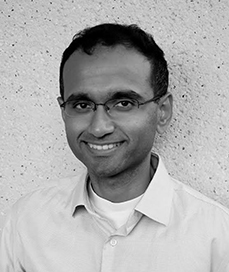Aaswath Raman at TED2018: ‘The next renewable resource? The cold of space’

Aaswath Raman, one of the newest members of the Department of Electrical and Systems Engineering, is using his background in optics and materials science to take an ancient idea and apply it to a pressing, modern-day problem: cooling.
He spoke at this year’s TED conference in Vancouver, explaining how harnessing “radiative cooling” could be the key of breaking the feedback loop between higher temperatures and growing greenhouse emissions generated by air conditioners, refrigerators, and other energy-intensive ways of keeping things cold.
At the TEDBlog, Daryl Chen described Raman’s approach:
Night-sky, or radiated, cooling has long been familiar to meteorologists and scientists, but its power has never been fully exploited, in part because it’s counteracted much of the day by the sun. So Raman has designed an artificial multilayer optical material that effectively harnesses this process (fun fact: it’s 40 times thinner than the typical human hair). The material emits heat at the precise wavelengths in which our atmosphere lets out heat the best and it also thoroughly reflects sunlight so it can be used during the day. It is, as Raman puts it, “a material that’s colder than its surroundings, even though the sun is shining on it.” In field trials, attaching panels made from the material to an air-conditioning unit boosted its operating efficiency by as much as 12 percent. By integrating the panels with energy-efficient cooling systems, Raman speculates we could reduce energy expenditures by up to two-thirds. He hopes to test it in commercial settings over the next few years.
Read the rest of Chen’s post here.
Raman also described this approach at the New York Times’ ClimateTECH conference last year.

